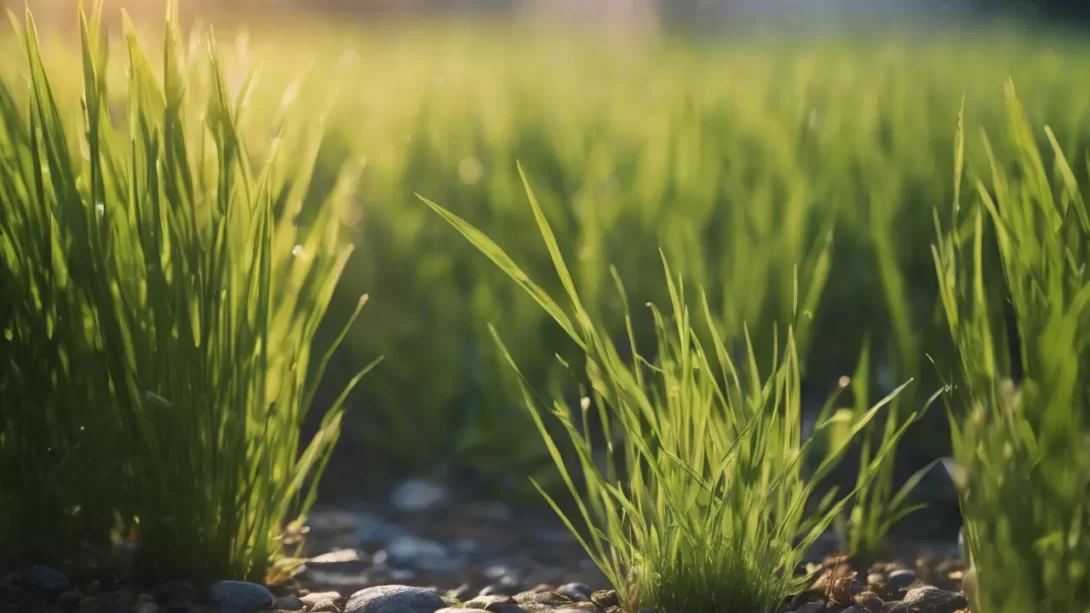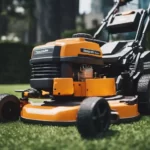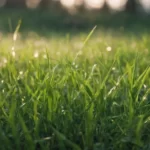Maintaining a lush, green lawn is a goal for many homeowners, and proper watering is a critical aspect of lawn care. However, a common question arises: can you overwater grass? Indeed, overwatering is a potential issue, one that can have significant impacts on the health and appearance of your lawn. This article explores the basics of grass watering, the consequences of overwatering, and how to identify it.
The Basics of Grass Watering
Grass, like all plants, requires a specific amount of water to thrive. The exact amount varies depending on several factors:
- Grass Type: Different species of grass have varying water needs. For example, cool-season grasses typically require more water than warm-season varieties.
- Climate and Weather Conditions: In hot, dry climates, grass may need more frequent watering, while in cooler, wetter regions, it may require less.
- Soil Type: Sandy soils drain quickly and may need more frequent watering, whereas clay soils retain moisture longer.
- Seasonal Changes: Watering needs can vary with the seasons. Grass often requires more water during active growth periods in spring and less during dormant periods in winter.
Understanding these factors is essential for determining the right watering schedule for your lawn.
Consequences of Overwatering Grass
Overwatering can lead to a host of problems for your lawn:
- Root Problems: Excessive water can suffocate grass roots by depriving them of oxygen, leading to root rot and weakened grass.
- Disease Susceptibility: Overwatered lawns are more prone to fungal diseases due to the moist, damp conditions.
- Insect Attraction: Certain pests are attracted to overwatered lawns, which can lead to infestations.
- Nutrient Leaching: Too much water can wash away essential nutrients from the soil, degrading its quality and affecting grass health.
Recognizing these risks is the first step in preventing the potential damage caused by overwatering.
Identifying Overwatered Grass
To determine if your lawn is overwatered, look for these signs:
- Color Changes: Grass may turn a lighter shade of green or yellow.
- Texture Changes: Overwatered grass often feels spongy underfoot.
- Growth Patterns: You might notice uneven growth, with patches of poor growth or wilting.
- Soil Condition: Waterlogged soil, puddles, and the presence of moss or algae are indicators of overwatering.
Best Practices for Watering Grass
To maintain a healthy lawn, it’s important to follow best practices for watering:
- Proper Watering Techniques: Water your lawn deeply but infrequently. This encourages deep root growth. Typically, lawns need about an inch of water per week, either from rainfall or watering.
- Weather Adjustments: Be mindful of the current weather conditions. Reduce watering in rainy periods and increase it during dry spells.
- Irrigation Systems: If using sprinklers or an irrigation system, ensure it’s properly calibrated to avoid overwatering. Smart irrigation systems can adjust watering based on weather conditions.
These guidelines help provide your lawn with the necessary amount of water without the risk of overwatering.
Correcting Overwatering Issues
If your lawn suffers from overwatering, taking steps to revive it is crucial:
- Alter Watering Schedules: Reduce the frequency of watering and allow the soil to dry out between waterings.
- Soil Aeration: Aerating your lawn can improve drainage and oxygen flow to the roots, helping to alleviate compaction caused by overwatering.
- Addressing Fungal Growth: If fungal diseases have appeared, you may need to apply a fungicide. Always follow the manufacturer’s instructions or consult a lawn care professional.
Implementing these corrective actions can help restore the health and vitality of an overwatered lawn.
Preventive Measures and Long-term Lawn Care
Preventing overwatering is key to long-term lawn health:
- Regular Monitoring: Regularly check your lawn’s soil moisture and adjust watering accordingly.
- Lawn Maintenance: Regular lawn maintenance, including mowing, fertilizing, and weeding, contributes to overall lawn health, making it more resilient to issues like overwatering.
- Educating Yourself: Understanding your specific type of grass, soil conditions, and local climate can guide your watering practices more effectively.
Conclusion
Overwatering your lawn can lead to numerous issues, ranging from root problems and disease susceptibility to nutrient leaching and pest infestations. By recognizing the signs of overwatering, such as changes in grass color and texture, waterlogged soil, and the presence of moss or algae, you can take prompt corrective action. The key to a healthy lawn lies in understanding and implementing the best practices for watering, which includes deep, infrequent watering, adjusting to weather conditions, and using irrigation systems wisely.
Corrective measures for an overwatered lawn, such as altering watering schedules, aerating the soil, and treating fungal growth, can help in reviving its health. Additionally, preventive measures like regular monitoring, routine lawn maintenance, and educating yourself about your lawn’s specific needs are essential for long-term care.
Remember, every lawn is unique and may require a slightly different approach based on factors like grass type, soil conditions, and local climate. By paying close attention to these details and responding appropriately to your lawn’s needs, you can avoid overwatering and maintain a lush, vibrant lawn.
In conclusion, while it is possible to overwater grass, understanding the right balance of moisture for your specific lawn conditions is crucial. With the right knowledge and practices, you can ensure that your lawn remains a beautiful and healthy part of your outdoor space.



